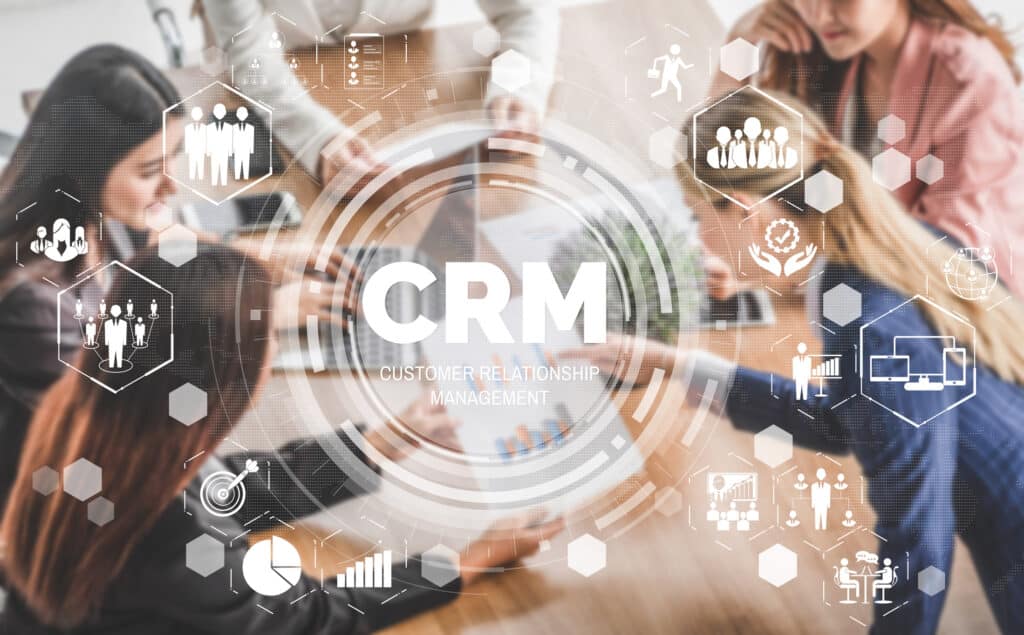Table of Contents
ToggleClose to the customer: thanks to sophisticated CRM
In earlier times, it was probably much easier not to lose personal contact with customers. There were more small businesses, fewer employees and contact was more personal and direct. The number of large companies in the SME retail sector alone increased by 95% between 1984 and 1992. Medium-sized companies and those on the cusp of becoming large companies are playing an increasingly important role on the German market. With industrialization and historically increasing company size, new technologies and growing customer bases, it is becoming increasingly difficult to establish and maintain a personal relationship with business customers. As a result, customer relationships are becoming more impersonal in times of mass processing and customer loyalty is declining. Of course, it takes time – and therefore money – to look after a wide variety of customers. But why is good customer service so important and how can costs be kept to a minimum thanks to well thought-out processes?
CRM - What it's all about
Customer relationship management (CRM for short) offers measures for customer acquisition and retention. This roughly translates as “customer relationship management”. It is about actively shaping customer relationships, establishing and maintaining relationships with customers and customer orientation. CRM is therefore primarily a customer-focused management approach.
Have you ever been annoyed by poor service yourself? Avoiding this is precisely the approach of a well thought-out CRM. In view of the general decline in customer loyalty, satisfaction with customer care is a particularly important criterion. Even with a large number of customers, individual communication between company and customer should therefore be guaranteed and made possible. The previous business relationship has a significant influence on the purchase decision. You should therefore never lose sight of an active CRM!
"New customers cost money - old customers bring money"
New customers are costly for a company: they are price-sensitive, the advertising campaigns to generate attention and the additional support and persuasion of potential customers lead to high expenditure. By striving for long-term customer loyalty, these costs of acquiring new customers can be reduced and further marketing costs can be saved. It is therefore essential to optimize the processes involved in retaining customers: Existing customers are loyal, have trust and thus ensure regular sales. In addition, satisfied existing customers are often credited with high recommendation rates.
The bottom line is that new customers cause significantly higher costs than convinced existing customers. Transaction marketing in sales as pure customer acquisition is therefore taking a back seat, while maintaining existing customer relationships is becoming increasingly important. This is exactly what a sophisticated CRM ensures!
Improve customer relationships through knowledge management and documentation
An important component of a helpful CRM is a structured and strategic approach to existing and potential customers, partners and contacts. Distinct knowledge management should therefore be one of the company’s top priorities. This includes not only the collection of address data and the creation of customer files, but also a certain (minimum) level of customer satisfaction.
Knowledge management and relationship marketing are the fundamental terms when we talk about organizing and improving the information and knowledge base. As already indicated, this is about more than just organizing contact data. The more knowledge is available and documented – regardless of the individual employee – the easier and better the relationship with the customer can be. Information about services already provided, customer preferences or their (life) backgrounds enable individualized contact. Continuous documentation makes it easier to link any customer concerns directly with existing information. An apt comparison would be a doctor’s patient file: with the help of this, the doctor knows immediately when and why a patient has already been to see him.
Transferring a doctor’s patient file to companies means that the context can be viewed and you as an employee are always informed about the current status. Internal communication channels can be shortened and the tedious search for data and information is no longer necessary. You can respond to the customer’s history and use your knowledge to give them the feeling that they are in good hands and well looked after.
A practical example: As part of content marketing, personal meetings are regularly held with the agency’s customers. However, some of them have booked additional services, which means that they have different contact persons within the company. A CRM makes all agreements and information available at a glance so that you can update yourself in all areas before a customer meeting. General questions can be answered more easily, you know which work orders are in progress and can give the customer the best possible advice.
A good CRM strategy is characterized by the fact that data is centralized, stored, documented and analysed. Knowledge is not lost even if someone is absent and you can always keep up to date with the latest developments.
Personal customer contact
Among other things, direct customer contact plays a key role. This usually results in relevant information that is also valuable for other employees. For this reason, all information should be documented immediately and made accessible to other employees. Existing knowledge can thus be used in the best possible way. Special CRM systems, which are discussed in the second part of this series, are ideal for this purpose. Through regular personal contact, relationships can be established and maintained between customer advisors and customers.
Improving customer relationships through customer relationship management strategies can therefore contribute to customer satisfaction – and therefore to the profitability of the company.
Analyses and strategies in the context of CRM
Careful planning, design and implementation of CRM is essential. First of all, goals should be defined and a suitable strategy determined. As a first step, existing customer data and customer processes can be analyzed. A subdivision into customer groups that make use of the company’s services can help to match target customer groups with their needs. This makes it possible to work out customer profiles to which specific products or consulting strategies can be assigned. Recorded data can also be used to identify other strategically relevant characteristics, such as when and why which customer was lost.
Acquisition of new customers
CRM can not only be helpful for maintaining existing relationships, but can also be used for classic new customer acquisition. Providing good customer service from the outset is just as relevant as categorizing potential customers. Are there customer groups that have a higher success rate or probability in terms of conversions?
By documenting and analyzing which customer group reacts how and how likely they are to use a service provided by the company, you can save time and money on support. For example, it is possible to classify certain groups as more “relevant” than others. In addition, collected contacts of potential customers are documented directly and provided with background information if necessary. Based on this data, you can be instructed to follow up with certain interested parties.
Between rational analysis and individual advice
It is of immense importance to find the balance between analysis, efficiency and individual support. The risk of dividing customers into groups is to lose sight of the individual customer and their individual situation and support. It is not just a matter of quantifying data, but the customer as a person with individual concerns should also be taken into account. The aim of successful customer relationship management is to create and maintain long-term customer relationships and loyalty. Of course, this is only possible if the customer is completely satisfied with service and support. A holistic CRM can therefore help to better adapt to the customer and their needs and thus contribute to vital customer relationships.
The benefits of CRM at a glance
The goal: Establishing, utilizing and maintaining personal relationships with customers
Establishing contacts, in the sense of acquiring new customers
Maintaining customer loyalty with satisfied (existing) customers.
- A clear definition of objectives and thus a well thought-out strategy
- Fixing and establishing the processes required to implement CRM
- Get to know customers better
- Work out customer profiles
- Analyses and data on customer groups
- Overview of the customer base
- Reduce expenses for customer acquisition
- Higher recommendation rates
- More personal relationships and better customer service
- Acquire new customers and expand existing relationships








